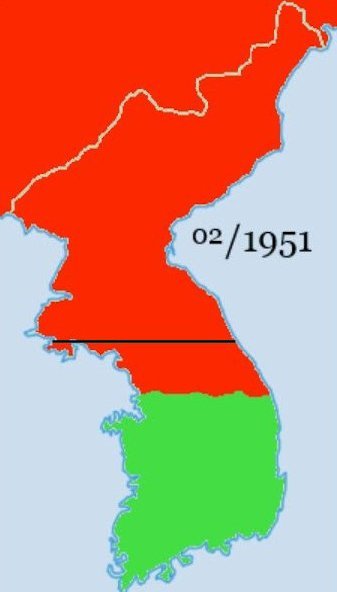
|
Korean War Time Line June 1950 to July 1953
10. Position of Forces in February 1951
In late January, upon finding that the PVA had abandoned their battle lines,
General Ridgway ordered a reconnaissance-in-force, which became Operation
Roundup (5 February 1951). A full-scale X Corps advance proceeded which fully
exploited the UN Command's air superiority, concluding with the UN reaching the
Han River and recapturing Wonju.
After cease-fire negotiations failed in January, the United Nations General
Assembly passed Resolution 498 on 1 February, condemning PRC as an aggressor,
and called upon its forces to withdraw from Korea.
In early February, the South Korean 11th Division ran the operation to destroy
the guerrillas and their sympathizer citizens in Southern Korea. During the
operation, the division and police conducted the Geochang massacre and
Sancheong-Hamyang massacre. In mid-February, the PVA counterattacked with the
Fourth Phase Offensive and achieved initial victory at Hoengseong. But the
offensive was soon blunted by the IX Corps positions at Chipyong-ni in the
center.[208] Units of the U.S. 2nd Infantry Division and the French Battalion
fought a short but desperate battle that broke the attack's momentum. The
battle is sometimes known as the Gettysburg of the Korean War. The battle saw
5,600 Korean, American and French troops defeat a numerically superior Chinese
force. Surrounded on all sides, the US 2nd Infantry Division Warrior Division's
23rd Regimental Combat Team with an attached French Battalion was hemmed in by
more than 25,000 Chinese Communist Forces. United Nations Forces had previously
retreated in the face of large Communist forces instead of getting cut off, but
this time they stood and fought at odds of roughly 15 to 1.
⇦ Back to January 1951
On to March 1951 ⇨
Back to Korean War Time Line June 1950 to July 1953 - Page 2
|
